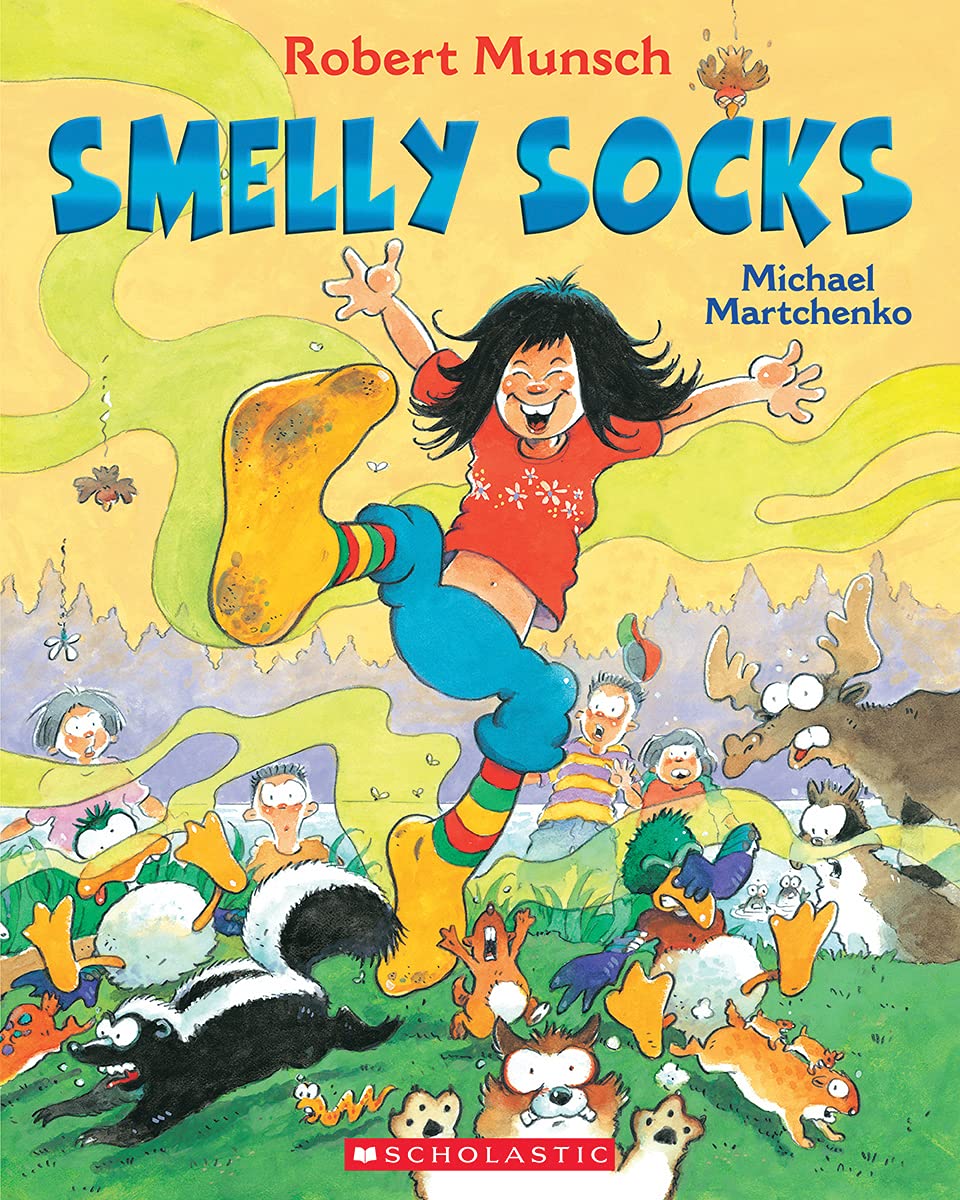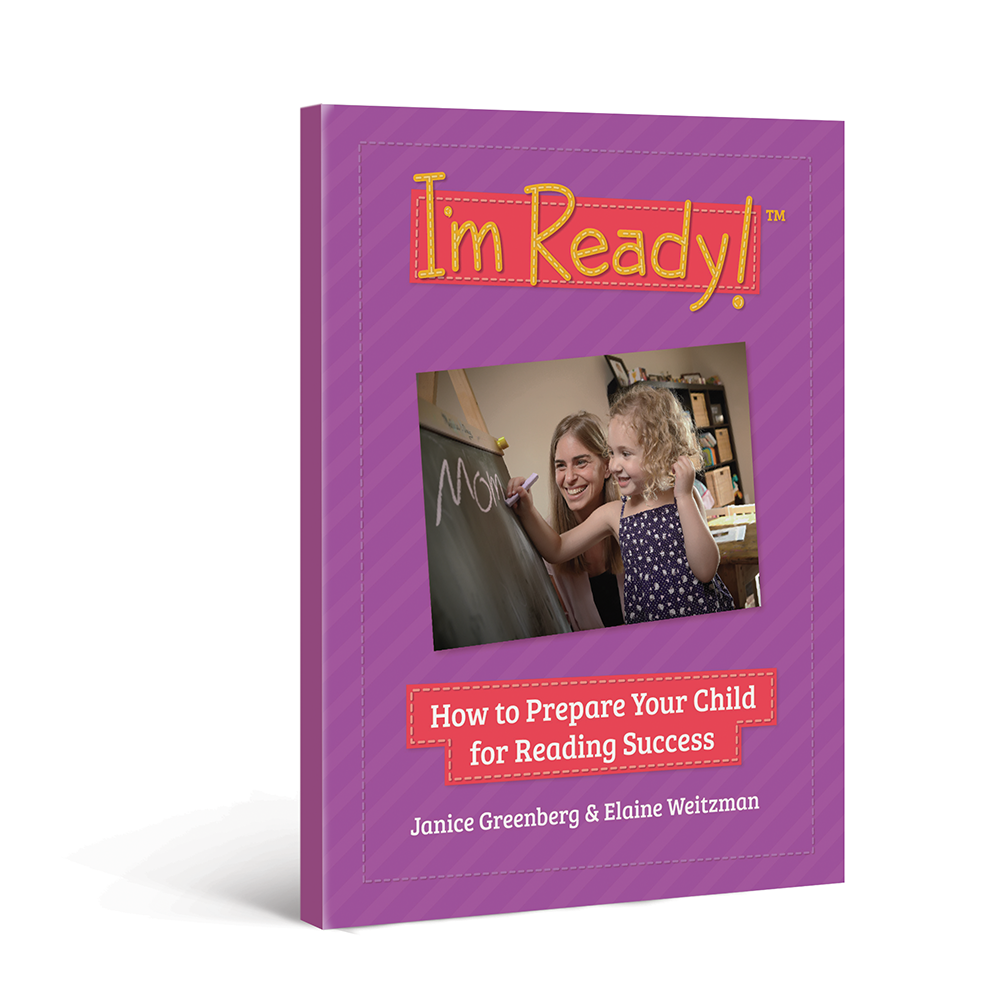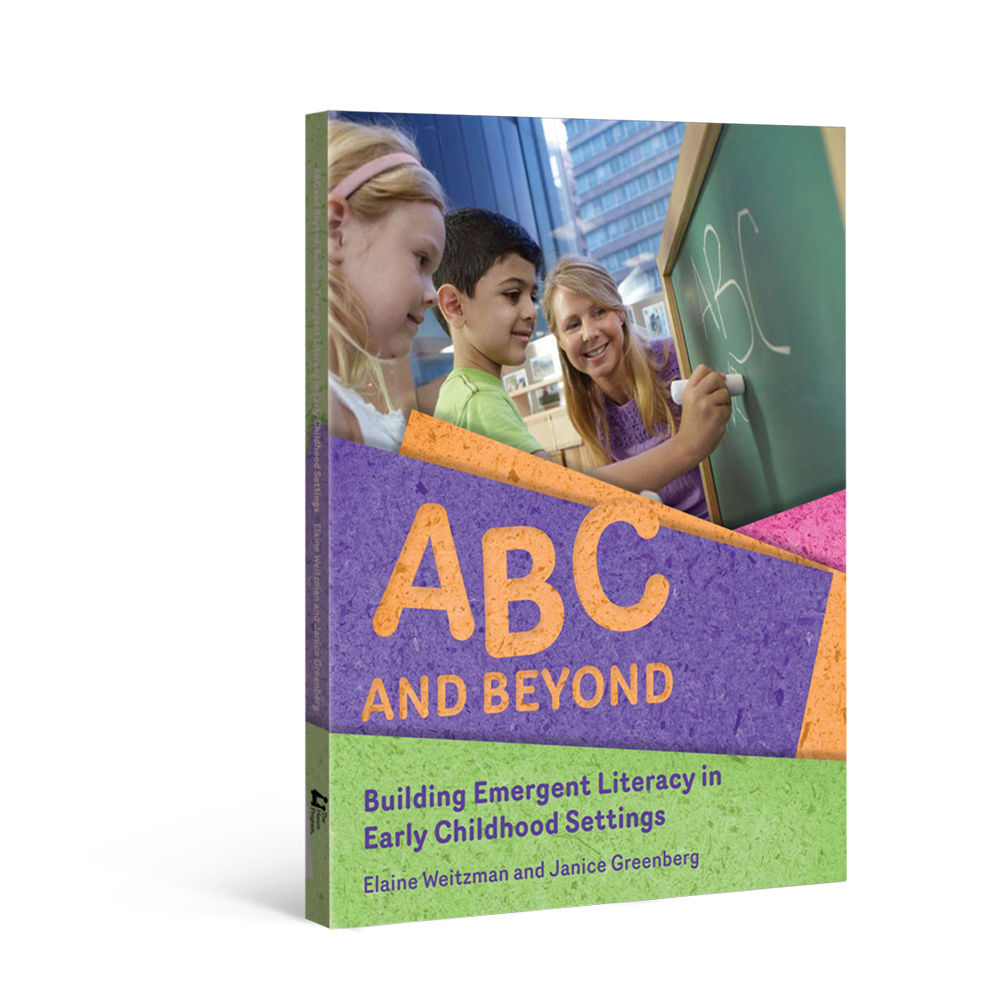This month's Book Nook topic is...
Problem Solving with
Smelly Socks

Quite often children’s storybooks revolve around a problem to be solved. Getting children thinking about and discussing how to solve problems encourages them to think more deeply about a story and draw on their own experiences. Not only does this build their problem-solving abilities, but it also sets them up for later reading and writing success.
The Book:
Smelly Socks by Robert Munsch
Why we chose it
With a parade of bright funny pictures, Smelly Socks follows Tina's adventure to buy new socks. Problems arise as Tina’s socks begin to smell terribly. Eventually, Tina’s classmates solve the problem by carrying her down to the river and helping her wash those stinky socks. Then Tina declares she wants a new shirt. After she gets a new shirt, Tina loves it so much, she vows never, ever to take it off!
This story provides many opportunities to discuss the layers of problems that occur and to engage in lighthearted problem-solving conversations.
The First Reading
The first reading is all about helping the child understand the basic message and elements of the story as told through the words and pictures. You can mention who the main character is, or make a comment pointing out the problem such as, “Tina’s socks are so stinky. This is a big problem for everyone around her!”. However, it’s best to keep the story flowing without too many interruptions during the first reading (To learn more about building understanding of the basic elements in a story, visit this Book Nook post). Once the child becomes familiar with the basic story, they will then be able to engage in more in-depth conversations during later readings.
Re-reading
Once a child has a basic understanding of the story, you can engage in longer conversations that require more in depth thinking about the problem and discussion of possible solutions.
Here are 2 ways to promote a deeper understanding of the story:
- Making thinking-out-loud comments
- Asking questions that build understanding
Use Thinking-Out-Loud Comments
These comments show the child how you are thinking about the problem in the story and trying to figure out information that is not actually stated in the book. Although comments don’t require a response from the child, you can make a comment and then pause to give the child time to think about what you have said. The child may take the opportunity to respond.
“Thinking out loud comments” usually start with words like:
- “I’m wondering…..”
- “I’m thinking that….”
- “I’m trying to figure out….”
Here are some examples of “Thinking out loud” comments you could use to explain the problem and engage in problem-solving conversations with Smelly Socks:
- “The first store only had black socks. I’m wondering how she will get to the other store.”
- “Wow, those socks are dirty. I’m trying to figure out how I would convince her to take her socks off to wash them.”
- “It looks like the kids are going to help Tina. I’m wondering how they will clean her socks.”
- “The animal didn’t like the smell of Tina’s stinky socks. I wonder if the children could have washed them somewhere else.”
Using these types of comments helps the child to “read between the lines” to think about the problem and possible solutions. It also models how the child can express their thoughts and ideas.
Ask Questions That Build Understanding
Another way to support problem-solving skills is to ask questions. Once the child is familiar with the story, you can ask questions that draw on their knowledge, experience and reasoning skills. Be sure to give the child lots of time to answer the question. If the child doesn’t answer the question, you can suggest a possible action or two and continue reading. For example:
- “Tina’s mom doesn’t have a car. How could she get to the sock store?”
- “Tina tried to row the boat, but it went in circles. How could she make the boat row straight?
- “What would you do if the store only had black socks?”
- “Tina’s socks are too stinky. What should she do
- “Tina won’t take her socks off. How could you wash the socks while she is still wearing them?”
As you re-read the story in second and third readings, you can continue to engage the child in conversations with questions and think-out-loud comments that build in-depth thinking and problem-solving skills. This is an important part of story comprehension that will lay the foundation for future independence with reading and writing skills.
Happy Reading!
More Resources
The strategies in this Book Nook post are drawn from Hanen’s practical, research-based guidebooks for building emergent literacy. Explore the links below to learn more about how these guidebooks can support you.
For Parents I'm Ready! guidebook
I'm Ready! guidebook
For Educators ABC and Beyond guidebook
ABC and Beyond guidebook
